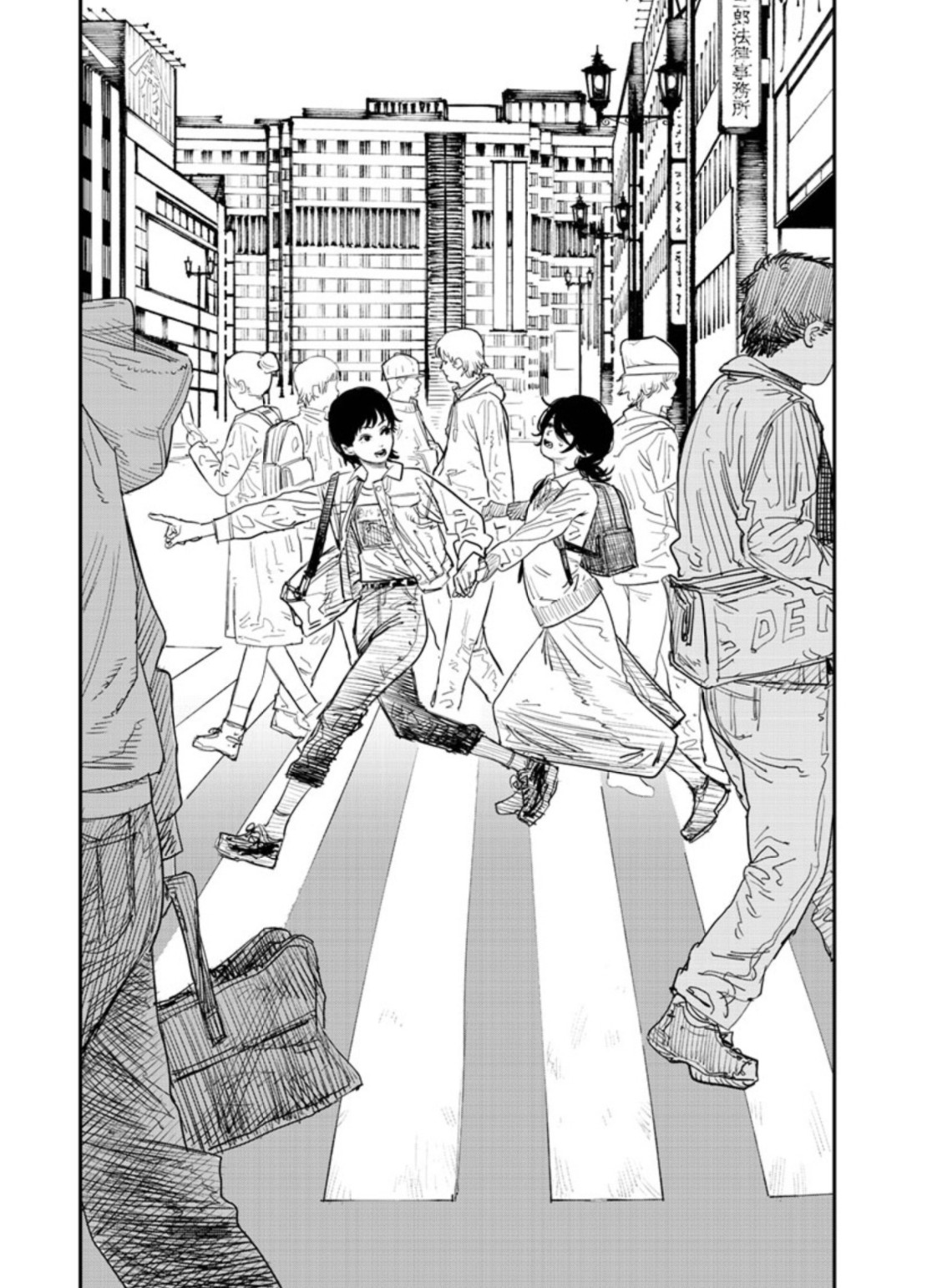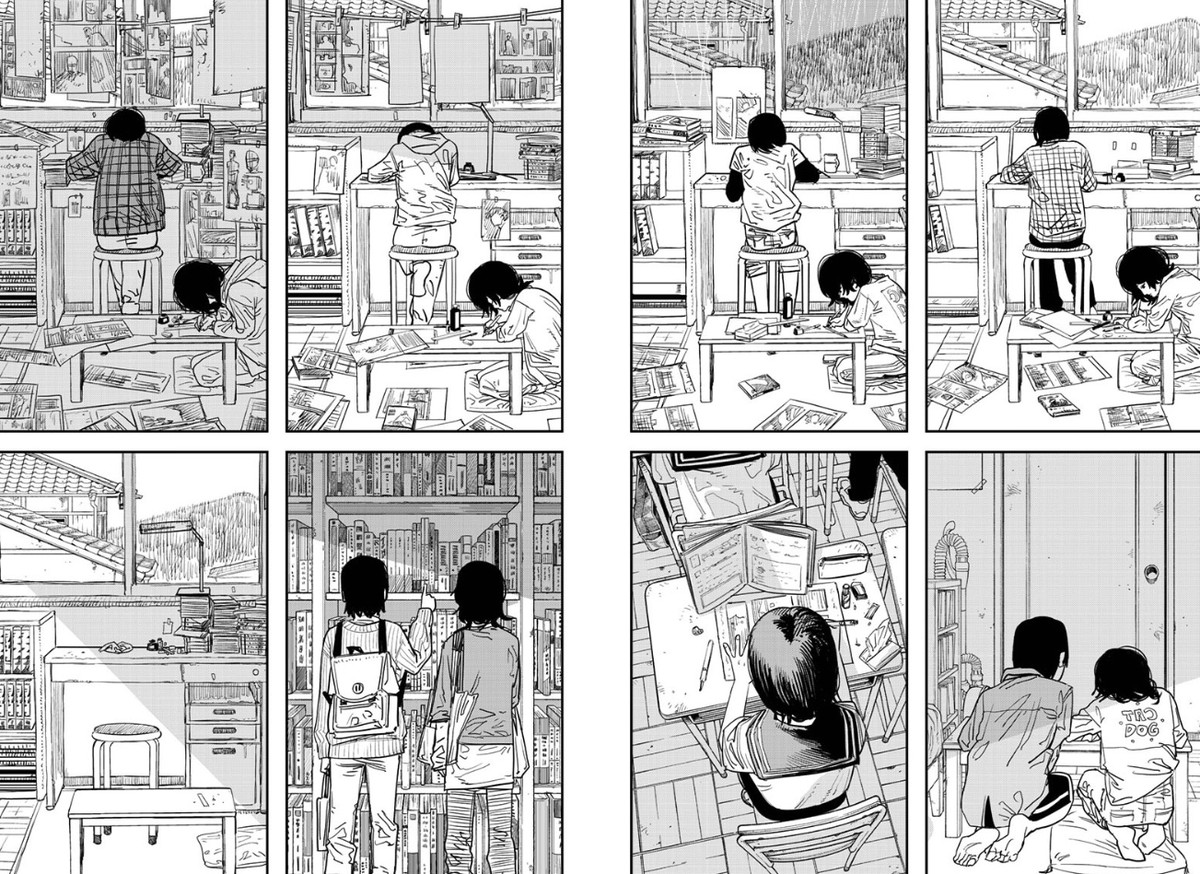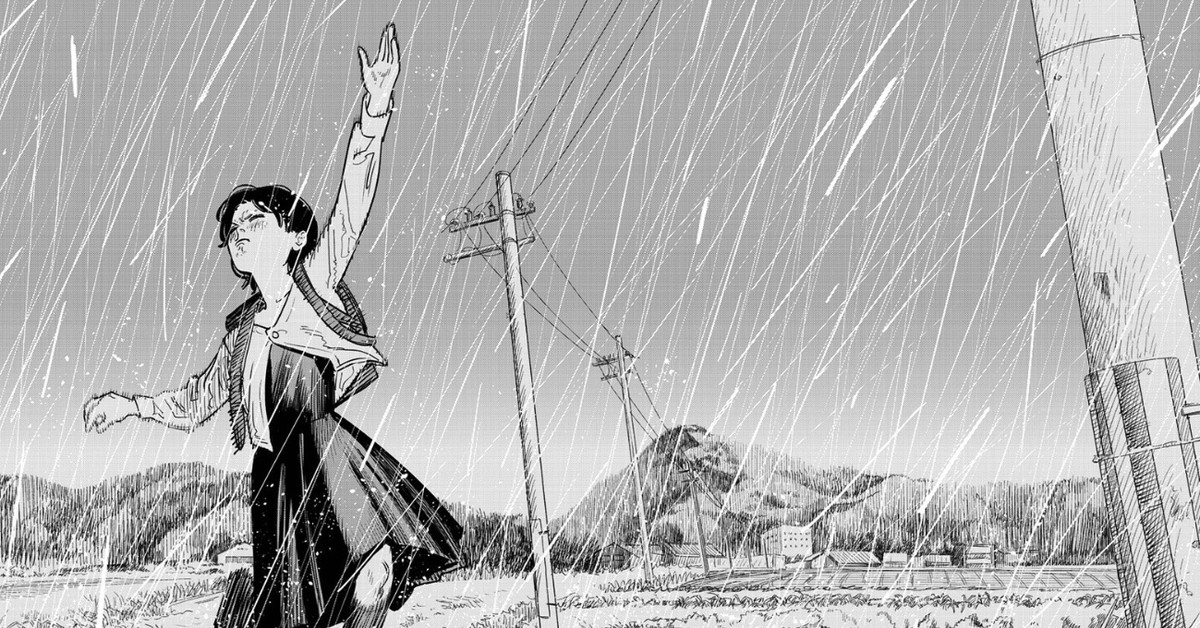Tatsuki Fujimoto is known for writing horny boys. His most popular work, the best-selling manga and soon-to-be anime Chainsaw Man, is a gory action series that stars a teenage boy who is driven by the desire to touch boobs for the first time.
Fujimoto’s recent one-shot, Look Back, is nothing like that. Instead, he crafts a moving and devastating story about friendship, the diverging paths we take in life, and why we create art. No guts, no gore, just a loving story about two friends who want to write manga together. The entire story is currently available on Viz’s website.
Look Back starts with a young girl named Fujino, a confident student who is good at everything she does, including drawing manga for her student newspaper. Fujino absorbs the praise of everyone around her, until one day, quiet truant Kyomoto, from the class next door, submits a comic of her own. Kyomoto’s work is beautiful and cinematic — her work, while not as funny as Fujino’s, is a detailed study of empty rooms and sunlit buildings. “Fujino’s art looks totally average next to Kyomoto’s,” Fujino’s classmates say, to her horror. At first, Kyomoto’s aptitude spurs Fujino to practice her art as much as possible, but eventually, her inability to surpass Kyomoto discourages her, and she quits.
However, after being tasked with delivering a graduation certificate to Kyomoto, Fujino lures the truant out of her bedroom with a comic. In the strip, a crowd roars in a stadium, “It’s the shut-in world championship finals! Kyomoto is in first by a wide lead,” it jokes.

Image: Tatsuki Fujimoto/Shueisha Inc.
Fujino slips the strip under the door and starts to leave until Kyomoto chases her down. Sweaty, with messy hair everywhere, Kyomoto tells Fujino that she inspired her own work, and asks Fujino why she stopped drawing. Brashly, Fujino says she only quit because she started working on her first book: a one-shot. On her way home, Fujino romps in the rain and reaches for the sky. When she gets home, she picks up her pencil to start the first draft of the story she bragged about. Thus kicks off a years-long relationship between the two of them drawing manga together under the moniker Kyo Fujino.
Chainsaw Man, like Look Back, is gut-wrenching in an emotional sense. But Look Back spares the audience the guts and gore. It’s also more approachable than Chainsaw Man and other shonen series like it. Some shonen are hundreds of chapters long, and have been running for years. I blazed through Look Back in a single afternoon.
Look Back is a beautiful story of friendship, but what makes it an essential read for any new reader or veteran is how it prompts readers to think about how the art in their hands was made. As the girls draw, Fujimoto conveys the subtle passage of time by making the girls shift positions at their desks over the course of hours and hours. The time-lapse allows us to revel in the amount of work they put into making their dreams come true. It demonstrates the simple reality that any reader should know: Making manga takes time, work and sacrifice.
Toward the end, Fujino questions why she makes manga at all. Working has become a difficult hassle for her: “You can draw aaall day long and still be nowhere near finished.” She’d be better off just reading manga, she reasons. It’s a callback to the opening scene, where a peer asks if she would want to become a manga writer. Fujino says, “sitting at a desk all day sounds boring,” and says that being a professional athlete would be more her speed.
So what brings the begrudging artist out of her own unwillingness to create? Her friend. The first person who pushed her to improve.

Image: Tatsuki Fujimoto/Shueisha Inc.
After Fujino expresses her doubt, Fujino cuts to a panel of Kyomoto’s tired eyes, looking up at her and reminding her of her responsibility to her friend’s work. Kyomoto was the reason she drew all along. After thinking of her, Fujino goes into her room and changes into more comfortable clothes, and she returns to her drawing desk.
Writing manga is a painful, laborious process in good times. In bad times, creating art, writing, doing anything really, can be difficult as we face the anguish of life. However, no matter how hard the act of creation is, manga becomes a way for Fujino to express her love of her friend, and also keep her memories of her alive. In the end, Fujimoto shows Fujino, alone, her back facing us again, and the city architecture leading our eyes to her — a reference to Kyomoto’s own work as a background artist.
Polygon – All
Source link
Related Post:
- Chainsaw Man anime trailer debuts in all its gory glory at MAPPA event
- Chainsaw Man Anime Teaser Trailer Shared
- When does the Chainsaw Man anime come out? The latest on release, streaming info
- Unmaze review – “Horrifyingly beautiful art (forget the story, though)” | Articles
- Sword and Shield Manga Has a Unique Spin on the Game’s Story
- Turbo Overkill Brings Ultraviolent Cyberpunk FPS Action To Switch In 2024, And It’s Got A “Chainsaw Leg”
- Beautiful Desolation Gets Two New Trailers
- App Army Assemble: Flocks – Does this beautiful puzzler bring anything new to the genre? | Articles
- New Xbox Series X Wireless Controller Revealed With Beautiful Aqua Shift Special Edition Design
- Beckett review: Netflix’s wrong-man thriller stars the wrong man for the job
